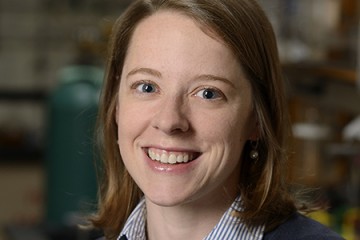Four Johns Hopkins faculty are among 126 top U.S. and Canadian researchers to be named Sloan Research Fellows for 2018.

Image caption: The 2018 Sloan Research Fellows from Johns Hopkins are (clockwise from top left) Janice Chen, Yi Li, Shigeki Watanabe, and Suchi Saria
The two-year fellowship, founded in 1955 by the Alfred P. Sloan Foundation, recognizes scientists early in their careers who show promise in making significant contributions to their fields—chemistry, computer science, economics, mathematics, computational and evolutionary molecular biology, neuroscience, ocean sciences, and physics. The fellowship is accompanied by a $65,000 award.
Sloan Research Fellows, who are nominated for the award by their fellow scientists, are selected for their potential to become leaders in their respective fields. Fellows have gone on to win 45 Nobel Prizes and 69 National Medals of Science.
"The Sloan Research Fellows represent the very best science has to offer," said Adam Falk, president of the Sloan Foundation and a Sloan fellow himself in 1995, when he was a young physics faculty member at Johns Hopkins. "The brightest minds, tackling the hardest problems, and succeeding brilliantly—Fellows are quite literally the future of 21st century science."
The four Sloan Research Fellows from Johns Hopkins University are:
Janice Chen, Krieger School of Arts and Sciences
Janice Chen's studies break the confines of traditional brain science research. She uses familiar, realistic stimuli in her studies, such as stories or movies, instead of the tightly controlled, seemingly random visual or verbal stimuli used in tradition studies of brain activity. She wants to understand how humans construct and retrieve complex memories, which may be triggered by sensory stimuli and may themselves cue more memories or change how incoming stimuli are interpreted. Her work uncovers how the human brain combines memory and sensory perception to understand the present—the research subject's current experience.
She is an assistant professor in the Department of Psychology and Brain Sciences in the Krieger School.
Yi Li, Krieger School of Arts and Sciences
A condensed matter theorist, Yi Li is interested in exploring the quantum phases of matter and their organizing principles—or as she describes it, the social behaviors between electrons. The materials Li studies, particularly topological insulators and superconductors, are not made up of a static collection of subatomic particles—these particles interact with one another in specific ways. Understanding how these electrons interact in different materials could not only lead to the development of new quantum materials, but could also lead to the discovery of entirely new classes of materials as well.
She is an assistant professor in the Department of Physics and Astronomy, and says she's looking forward to establishing a competitive research group focusing on quantum phases of matter.
Suchi Saria, Whiting School of Engineering
Suchi Saria has a vision for health care that is able to save lives through complex computer science. She has created computer algorithms that hospitals can use to recognize sepsis, a life-threatening condition that claims the lives of more hospital patients every year than breast and prostate cancer combined. Last year, she was named to MIT's "35 Innovators Under 35" for her work building next generation diagnostic and treatment-planning tools for health care.
Saria's primary faculty appointment is in the Department of Computer Science at the Whiting School, and she is also an assistant professor in the Department of Health Policy and Management in the Bloomberg School of Public Health.
Shigeki Watanabe, School of Medicine
In the nervous system, nerve cells send signals to one another across a minuscule gap called the synapse. During these transmissions, the nerve cells, or neurons, undergo rapid cellular and molecular changes, and Shigeki Watanabe, an assistant professor in the School of Medicine's Department of Cell Biology, wants to know how these changes occur and how they might contribute to nervous system dysfunction. He helped pioneer a cutting-edge "flash and freeze" electron microscope technique that compiles microscopic images into what is basically a flip-book in order to animate—and investigate—the cellular dynamics and changes at play.
Posted in Science+Technology, University News








